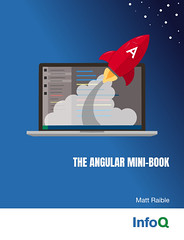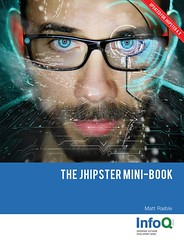Colorado JUGs
The last two nights I gave talks at the Denver JUG and Boulder JUG meetings. On Wednesday night, I presented AppFuse in the basic concepts meeting and Thursday I was the main speaker at BJUG. Both meetings were great and my presentations went pretty well. Denver had about 50 attendees and Sue Spielman gave a very informative talk on J2ME. To me, J2ME seems like the equivalent of Swing for the Desktop. Building mobile-friendly websites seems like an easier route - then you don't have to worry about how the phones differ. Maybe I don't know enough about J2ME - why should I write a J2ME app when I can write a webapp? To me, it seems that I should stick with what I'm familiar with - and if I do choose to get into the mobile space, websites would be the way to go. My phone (a T68i) was very helpful last week in San Deigo. I used it's internet access and go2.com to find directions to several locations in San Diego. I just told the website to "auto-locate" me, then I'd type in an address and voila - it spit out a list of directions. Bruce and James also wrote about the Denver meeting.
Last night was the Boulder meeting, where Scott Davis kicked it off with a talk on Struts. My AppFuse presentation could've been much better if I based mine off of Scott's. I do some live coding of a DAOTest and a DAO in my presentation - and I think the audience would've gotten a lot more out of it if I'd showed them how to develop Actions and JSPs with AppFuse. Oh well, that's what the tutorials are for. I also like showing the DAO stuff because it shows the power and simplicity of the Hibernate+XDoclet+Spring combination. It's pretty cool to mention that integrating Spring into AppFuse only took a few hours. During integration, I remember deleting 5 or 6 classes/files and reducing my LOC count by about 75%.
After the meeting, I talked to one guy who was interested in adding a Swing front-end to AppFuse. I told him it shouldn't be too hard since the dao and service layers are already packaged as JARs. From a Swing app, you could easily reuse the business delegates and DAOs to talk to a database. The hard part would probably be mimicing authentication and authorization. I'm guessing that JAAS could probably provide a nice standards-compliant solution for this. I'm sure Spring's RCP project could make developing this front-end even simpler. I also talked to Kris about helping with the WebWork version of AppFuse. Hopefully he can help me out and make that happen sooner than later. I'm still targeting the end of July for a WebWork/Sitemesh-enabled release, as well as lots of enhancements to IDE friendliness.
Both meetings where followed by beers and good conversation. Last night, the tavern we were at lost power after about an hour. That didn't stop us from spending another hour in the dark telling old war stories. Good times - thanks to all who participated!

